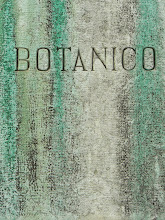 In Denmark, on the island of Læsø, off the east coast of North Jutland, are houses with seaweed roofs, some of which have survived for as long as 300 years.
In Denmark, on the island of Læsø, off the east coast of North Jutland, are houses with seaweed roofs, some of which have survived for as long as 300 years.The seaweed, or eelgrass (Zostera marina), grows up to two metres or more long. It was collected from the seashore by horse and cart and, once dried, bundled and twisted into thick ropes that were then woven through a home’s rafters to form a roof a metre thick.
Over the centuries, the eelgrass roofs became misshapen and formed a habitat for wildflowers, with sedums and grasses sprouting on their surface. Today, only 20 of the houses survive.
A fungal disease wiped out much of the eelgrass in the 1920s and, perhaps due to changing sea currents, the beds have still not recovered around Laesø. The island’s residents have also started thatching their roofs with straw instead; it lasts only a few decades but is less labour intensive.
In its heyday, creating an eelgrass roof involved the labour of at least 40 women, while the men were out at sea. Henning Johansen, who is reviving the art of seaweed thatching, has estimated that it takes 300kg to thatch just 1 sq m of roof. Once complete, the roof’s ridge is covered with squares of turf to weigh it down. As rain permeates the layers of dried seaweed, it causes them to “glue together”, becoming watertight.
Johansen says that not only is a seaweed roof fire-resistant, it is also possible to walk on one without damaging it, which was important to the residents of the island centuries ago. They would regularly stand atop their homes with a telescope, looking out across the flat, then-treeless island for ships caught in storms. The main source of wood for the interiors of the houses came from shipwrecks.
Near the island’s main town of Byrum is Museumsgården, a fine, 350-year-old courtyard farmhouse that has been preserved. It has panelled walls from shipwrecks and recycled heavy oak timber flooring. The foundation is a layer of stones from the seashore, upon which timbers have been placed directly. Interior walls that aren’t made of salvaged wood are clay mixed with seaweed and covered with a lime wash.
Today, the island has been reforested and residents can no longer see the sea from their rooftops. Unfortunately, according to Johansen, reforestation might have been a factor in the demise of the seaweed roofs. In the 17th and 18th centuries, once the small island had been deforested, the air would have been full of sea salt, inhibiting the growth of plants on the roofs. Now, many houses are surrounded by trees, protecting them from salt-laden winds. Grass and other plants take root easily in the seaweed roofs, which eventually rot and have to be removed.
Over time, Johansen hopes to replace some of the existing roofs with new seaweed ones, rather than straw. He imports bales of dried eelgrass from 300km away in the southern Baltic and will soon start to make the first seaweed roof for over a century at a cost of £100,000 to its owner.
One tradition he will change, however, is the inclusion of a cow’s head or a cat inside the roof for good luck. “It was important for the cat to be alive when it was put there,” he says.
In Financial Times, 30-8-2008
http://www.museerne.dk/content/dk3



Sem comentários:
Enviar um comentário